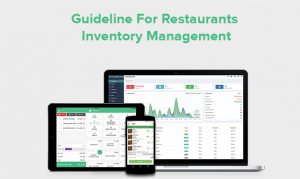“A perfectly managed kitchen seems to be fluid all around”
Gaining fruitful management for restaurants certainly counts on several components that work together as a whole. FoodBucket helps you to assist your customers with consistently great food.
At times keeping up with the tasks while running a restaurant can be really tough, but accomplishing the tasks is a win-win situation for you surely. To run a restaurant by effectively managing inventory, all you require is a clear understanding of some key elements, as well as the discipline to confirm that they are accurately done in and out.
What you basically require is dedicating your precious time to developing a keen understanding of how to do effective inventory management plus adopting the inventory management software will surely pay off.
It is even essential that you keep your managers and staff up to date with this inventory control work. Clarify all your restaurant’s target areas. When the team is well aware of how the procedure works and also why they are done will lead to great consequences.
The few steps of the system that will help you execute your financial results are as under:
Many of you might be wondering about the foundation of inventory management. The basic and essential foundation is ordering. If you want to be a successful operator you need to have a serious understanding and teach your staff the goal of a successful restaurant. You must keep a minimum or precise number of products but do not run out of items as well before your scheduled delivery. You can easily achieve this by calculating your workable par levels.
Firstly you need to create an order guide with the exact number of the product description.
Fill your guideline with all the quantities ordered every time. Keep reviewing your guideline daily and specifically use them as a tool to train your staff members as well.
At times when your items or products are not received or organized could get you into a deep mess. It might lead to your food not being prepared properly or late which leads to a really bad impression on your customers. Henceforth, for this what you need to do is organize your racks or shelves and make room for all the items you require on a daily basis. Create awareness related to all items in the building or the staff. This will make things easier. You also need to be sure that the items are received on time, properly inspected, and are the correct items you ordered. Refrigerate all the frozen items or store them in their correct places according to their required temperature. Keep a keen crisscross that all the fresh items like dairy, meat, etc are garden fresh and have a sufficient life before they expire. If you follow these simple rules, you will lead your kitchen neat, clean, and well-organized.
The next big part of effective inventory management is food preparation. It directly links to your food quality, freshness, and food cost percentage. What you need to do for flourishing makes a preparation sheet. The proper use of this is can have a great impact on the productivity of the volume of prepared foods. What you need to do is organize The prep sheet should have parts for all recipes and prepared items. Including shelf life for all prepped items and recipes on the prep sheet. Keeping a check and balance that there is enough product for the whole day. They should be mentioned on the sheet. Moreover, your manager should be aware of what items are being prepared and what not, recipe consistency, and proper food handling.
The basic purpose of conducting a food inventory is to keep the check and balance on the total amount of all the sellable food items at any given time. This is one of the most critical pieces of your inventory management. Your sheets must be updated, including all the pricing. Also, update the price of raw products as well as any recipes that they are used in. It should be done after your operating hours. If you want to keep up with the inventory then the daily counts are recommended. Check and balance your food inventory monthly, but weekly is preferred. Keep a keen observation of food cost percentage. You can even do daily counts but for high-cost items mostly. Problems like food waste, theft, mishandling, over-portioning, etc. Will all be sorted out?
All that you need is planning, knowledge, and most importantly the discipline to put out your tasks and right activities accurately. If you desire to be successful in managing your inventory, then the operators must be aware of how to deal with and manage the staff. Provide them with basic knowledge and know-how. So, there is no real secret to inventory management.
